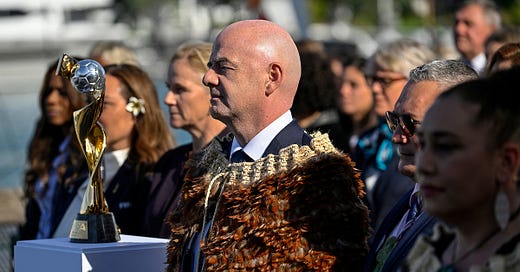VIPs and other very important things
If all the world cups turn to dust, we'll still have golf to fall back on
Sport was coming out our ears over the extended weekend in multiple codes. Yesterday, The Bounce took a closer look at a near-perfect Black Caps performance ($ subscribers).
I’m going to mostly park the All Blacks and their second-cousin twice-removed All Blacks XV until late…
Keep reading with a 7-day free trial
Subscribe to The Bounce to keep reading this post and get 7 days of free access to the full post archives.




